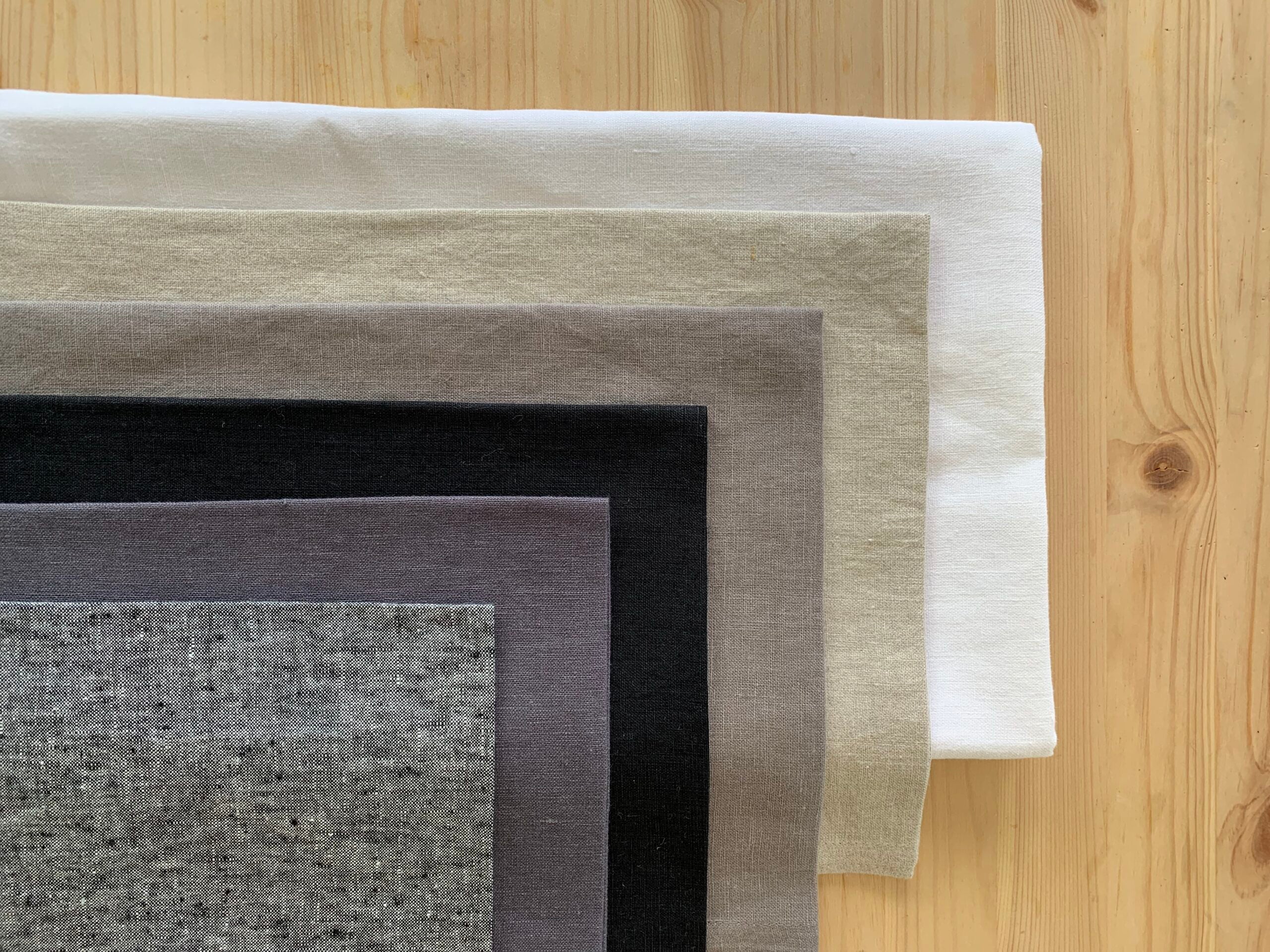Have other questions not listed here?
What is Flax Linen?
What is linen made of?
Linen is made from the stock of the flax plant. It’s the strongest of all the vegetable fibers (even cotton). It’s a renewable natural resource, being entirely derived from plants. The term “linen” is often used incorrectly.
Any textile with a linen-like texture, even those made of cotton, bamboo, hemp, or other non-flax fibers, is loosely referred to as “linen”.
At Love of Linens, we use only 100% natural flax linen to create long-lasting, handmade products like tablecloths, napkins, towels, and reusable bags.
Is linen sustainable?
Yes! Flax linen is one of the most sustainable natural fibers. It requires fewer resources to grow and process than cotton and is fully biodegradable. Our handmade flax linen products are designed to last for years, reducing the need for disposable or synthetic alternatives.
So why should I love linen?
Love linen for all the same reasons my family and I love linen!
- Because linen has 2 to 3 times the strength of cotton, and gets softer the more it’s washed.
- Because it can absorb up to 20% more than it's own weight in moisture.
- Resists dirt and stains.
- Also because it’s strong and durable, with the added benefit of not shrinking or creating lint, like cotton.
- And because no fabric can outperform linen in natural strength, lustre and durability!
Because of these characteristics, linen is the best fabric for reusable food bags, tote bags, napkins, towels, and tablecloths.
But don’t just take our word for it. Try it out and you will love it as much as we do.
What is the best towel material?
The best towel material is natural flax linen, of course! Some people swear by it, including our family. Once you dry off with a linen towel after a bath or shower, you’ll never go back to cotton again.
We also have great linen beach towels!
Are linen bags good for storing produce and bread?
Absolutely. Our reusable flax linen produce bags help keep produce and bread fresh longer by allowing airflow and preventing moisture buildup—unlike plastic or cotton alternatives. They’re a customer favourite at farmers' markets for a reason!
Using our Linen Veggie Bags
For vegetables that like to be wet, such as lettuce and celery,
- First wet the bag so it’s soaked.
- Second, rinse your vegetables carefully, remove any damaged areas, and then gently shake off any excess water.
- If you’re washing lettuce or greens, there’s no need to spin. Let your bag do the work!
- Third, store in the produce compartment of your refrigerator.
- Check the bag for moisture every couple days.
When the bag dries out after several days, soak bag again by running it under the faucet, vegetables and all.
Do not wet the veggie bag for vegetables that do not need water to remain fresh, such as mushrooms, peppers, etc. Store them as you would normally.
Linen Care Instructions
How do I care for my linen products?
Our handmade flax linen items can be machine washed in cold water with mild detergent. For smaller items, you can also hand wash linen. This is particularly useful for our produce bags, when storing produce that likes to be wet.
Over time, flax linen becomes softer and more absorbent with each wash—perfect for tea towels, bath towels, and reusable produce bags.
Can linen go in the dryer?
Yes. Put linen in the dryer at the low setting. Remove immediately after drying and fold or hang to prevent wrinkling. Alternatively, linen can also be hung to dry. It dries much quicker than cotton due to its unique physical properties.
Can linen be bleached?
No, bleaching linen isn’t recommended. Linen fibers can be weakened by chlorine bleach. Undiluted bleach should never be applied directly to the fabric, even if it is white. Chlorine breaks down the flax fibers. Use only a gentle stain remover and detergent (see below).
How do I remove stains from linens?
Some linens, such as our linen napkins and reusable cloth produce bags, often require a little different treatment because of their close contact with foods that can stain. So, taking care of your linen will help make sure it lasts as long as possible.
Stains should be treated prior to washing following the recommendations for specific stains. One word of caution: If the linen has been dyed, some colors may not be completely stable, and stain removal products can change the color. Always test a stain removal product on an inside seam or hem before treating the stain. Spread a dab of the stain remover on the seam and then rub with a cotton swab. If color transfers to the swab, don’t use the product! Test and use another product instead.
Linen Logistics
Do you make custom sizes?
Yes! We offer custom sizing for many of our linen products, including tablecloths and pillowcases. Reach out to us with your request and we’ll do our best to accommodate it.
How are linens shipped?
Orders are shipped after receipt of payment and within two weeks of ordering. All products are shipped via Canada Post. See our Shipping Policy for more information.
Do you offer local pickup or delivery?
Yes, we offer curbside pickup in Kelowna on orders of $35 or more. Choose “Curbside pickup” at checkout. Or, if you want delivery, enter a valid Kelowna postal code at checkout, and choose “Local delivery”.
What is your return policy?
We do not accept returns of personal items like pillow cases, regular, bath or beach towels. Refunds are CREDITS only. No cash refunds. We do accept for return all other unused product in its original and unused condition, as well as any product damaged as a result of shipping. We will not accept any CODs. Cost of shipping a returned product is the responsibility of the customer. We will not accept returns 7 days after the purchase date.
How is Flax Linen Made?
Learn more about how flax linen is made and why we are so dedicated to using this amazing fabric


